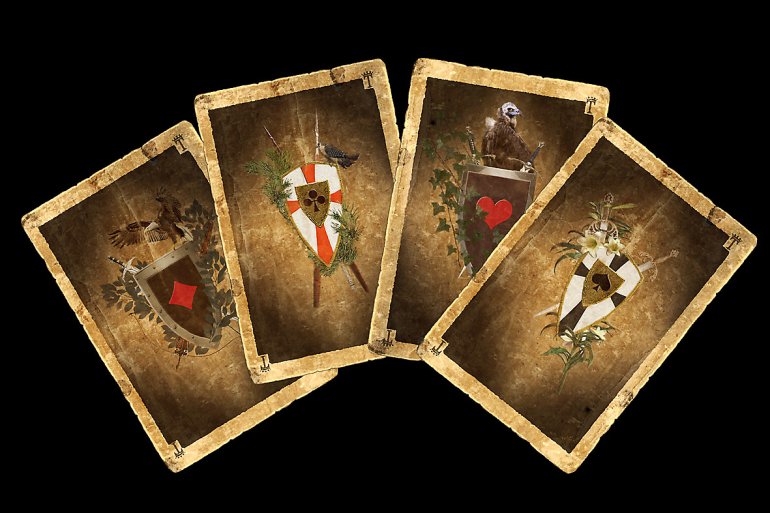 The history of gambling has thousands of years, and almost always, the same state has tried to deal with them. It began before there was gambling, and people were playing with each other without intermediaries. But even then, the rulers found these games extremely harmful, and the church had a powerful influence on the state.
The history of gambling has thousands of years, and almost always, the same state has tried to deal with them. It began before there was gambling, and people were playing with each other without intermediaries. But even then, the rulers found these games extremely harmful, and the church had a powerful influence on the state.
It called for a complete ban on gambling, considering it the devil, and saying about drunkenness, theft, and profanity. The state was concerned, first and foremost, that compulsive gamblers quit jobs and income from the game did not replenish the state.
Gambling in Medieval Europe
Playing cards or dice was banned in medieval France and England many times. There was a staunch opponent of St. Louis, King of France crusader. Even Henry VIII, the English governor known for his passion for games, was forced to impose a ban on all gambling establishments in the country because the soldiers were too addicted to games, which could affect the quality of their training and service.
Penalties for gambling and gambling houses were from fines to imprisonment and even the death penalty. Regardless, at certain stages, almost all European countries allowed the opening of gambling houses to replenish the treasury and solve the state's financial problems. However, even in times of severe punishment for gambling, casinos did not disappear and even increased in number.
Early History of Gambling in Russia
It is believed that the first cards appeared in Russia under Ivan the Terrible, although historians disagree. In the middle of the seventeenth century, there was an official ban on card games with punishment. The situation changed positively for the players during the reign of Peter the Great, who even started the production of cards in Russia. However, a money game was still considered a crime with fining. Thus, gamblers replenished the state twice - by buying cards of domestic production and paying fines for their passion.
In 1761 an exact distinction between gambling and games of skill was introduced. The first category includes lotteries, Orlyanka, Stoos, roulette, betting on horse races, and other games resulting solely from luck. The second group had the bridge, whist, and other games where the results relied on players' skills. People could only play commercial games, making small bets, and only at home, but not in public places. Games in the category of gambling were still banned.
Meanwhile, the scope of gambling got unprecedented dimensions. Under Catherine the Great, who was highly hazardous, everyone played everything. They played for money, buildings, farms, villages, and serfs. The first elite gambling houses appeared where the most notable gamblers flourished in pawnshops; there were a lot of cheaters. Then the gambling tax was introduced.
In general, everything was developed in the best traditions of Russia. Games of chance were banned mainly for the nobility, including officials and rulers. Card debt, for most people, was more important than state laws, and stories related to the card game boggle the imagination. For example, they say that Prince Golitsyn Count Razumovsky lost his wife because he had to divorce officially.
Alexander the First allowed the opening of the Imperial card factory near St. Petersburg and banned the import of cards from abroad.
Cards were sold twice the cost, and the proceeds were traditionally given to orphanages. This explains why a pelican was printed on the back of cards. It was a symbol of the department of educational institutions. In the same period, articles of legislation were adopted and again prohibited gambling and gambling houses. Yet, playing games for money at home was allowed, and a list of features characterized gambling houses. Fines for them were up to thousands of rubles; an alternative was imprisonment for several months.
Nevertheless, the popularity of gambling only increased. Rich people played in secret clubs and went abroad. Ordinary people indulged in this passion even in the markets and cheap brothels. The most eminent players gathered in hunting clubs. In 1905, gambling was legalized to distract people from thinking about troubles after the revolution.
Gambling in the USSR
In Soviet Russia, gambling was banned. But needless to say that playing for money was everywhere. Even schoolchildren played different games with coins. The lack of decent gambling houses to try a hand at traditional games forced them to invent more games.
In the post-Soviet period, the state allowed to open casinos, but at that time, it could not restore order in the gaming industry, and with the strengthening of its power in recent years, it has gone to extreme measures. Gaming zones and inconsistent government policies regarding this business do not allow it to develop. This means the casinos will continue to be underground, paying bribes to officials and security forces instead of taxes.
Explaining the reluctance of the state to adopt a positive experience of other countries in the gaming industry can only be lobbying their interests. They prefer to get bribes from illegal casinos than restore order in this sphere. Creating gaming zones in this form of gambling can not meet the population's needs. They will visit underground clubs or play on the Internet, where they are welcomed with open arms by hundreds of high-quality, honest, and proven online casinos.


























